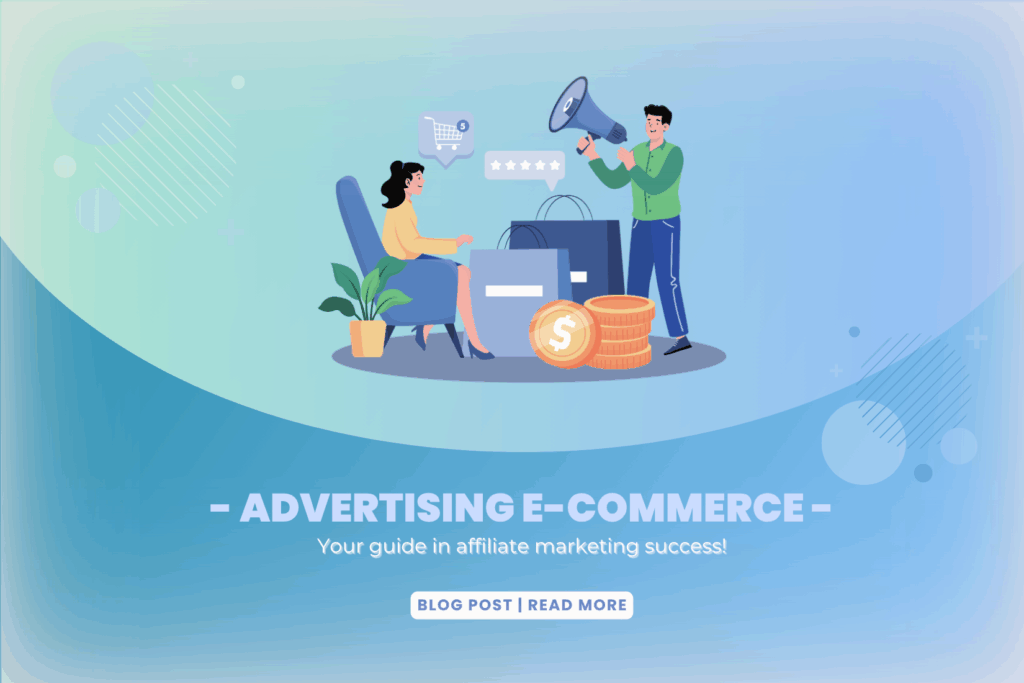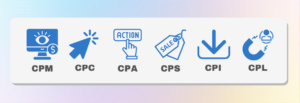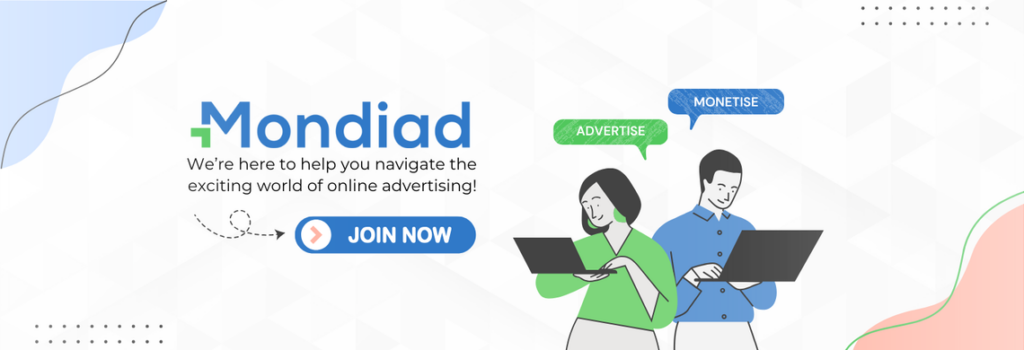Unlike other affiliate opportunities, the e-commerce niche offers provides it’s affiliates with the chance to work with a diverse range of products and brands, offering a steady stream of fresh. From high-converting seasonal deals to popular year-round products, e-commerce advertising allows affiliates to rake on serious cash.
If this is new to you, affiliate marketing is when an e-commerce brand allows middlemen/affiliates to promote their product and rewards them with an affiliate commission on each sale/action desired from the customer.
If you’re ready to join the club, keep reading to soak up the how-s and why-s on these verticals and get you started with the right foot on this journey!
What are e-commerce offers?
As the name implies, the term e-commerce (electronic commerce) relates to any sale that occurs in the online environment, whether it’s physical or digital goods.
Thus, e-commerce offers refer to promotional deals or discounts designed to attract consumers to purchase products from online stores.
Such promotions generally include special discounts, limited-time sales, buy-one-get-one deals, and many similar tactics to attract consumers to buy immediately.
E-commerce offers are highly effective in driving both traffic and conversions, making them a staple in online marketing strategies. They can cover a wide range of products, from fashion and electronics to digital products and subscription services. As a result, brands looking to boost sales often appeal to affiliate marketing to spread the word effectively.
Is the hype worth it?
Over the last few years, e-commerce has become an indispensable part of global retail, making affiliate marketing a very lucrative opportunity. E-commerce offers to appeal to a broad audience while brands often provide generous payout structures as incentives.
And that’s besides the following perks:
High demand across various niches:
The wide portfolio of e-commerce offers allows advertisers to tailor their offers to niche markets, maximizing the relevance and appeal of their ads. With more consumers shopping online, the demand is consistently strong.
Scalability and flexibility thanks to data-driven optimization:
E-commerce campaigns can be easily scaled up based on their performance by leveraging real-time campaign data. Advertisers can adjust targeting, budgets, ad creatives, landing pages and so on, to find the right audience and to keep up with the market trends and seasonal demands.
Global reach and accessibility:
With cross-border e-commerce on the rise, advertisers can promote e-commerce offers to diverse audiences, increasing the reach of hot audiences across regions.
According to Statista, approximately 67% of the global population had access to the internet in 2023, with positive growth foreseen in the future.
Low barriers to entry:
Unlike some niches that may require significant investment and time to see results, e-commerce advertising can be more accessible, making it suitable for both new and experienced advertisers. With a variety of ad formats—such as banners, native ads, push notifications, and dynamic creatives—advertisers can find effective ways to promote their offers even with limited budgets.
Seasonal sales:
E-commerce advertising thrives during seasonal events and holidays like Black Friday, Cyber Monday, Valentines Day, Halloween, Easter, and the like. During these periods, it’s easier for advertisers to drive higher traffic volumes and conversion rates, resulting in a significant revenue boost.
Attractive commission structures:
Many e-commerce brands offer attractive commissions to publishers promoting their products. For affiliates, this means that promoting e-commerce offers can be highly lucrative, especially when paired with popular and high-converting products. This win-win setup encourages publishers to push offers aggressively, resulting in more conversions for advertisers.
How about commission types?
Since the verticals encompass so many types of products, for a variety of people, worldwide, e-commerce affiliate offers come in a wide range of commission types, generally CPA(Cost Per Action), CPS(Cost Per Sale), CPL(Cost Per Lead), or CPC(Cost Per Click), since brands pay for specific actions. Regardless of the payout type, the end goal is to drive sales efficiently, while earning money.
💡 It’s important to note that buying traffic for e-commerce offers via CPM(Cost per 1000 Impression) saves you a lot of money by itself, but it is also a good option to start with when testing a new offer.
💡If you are a brand looking to raise awareness towards your product, CPM is also a great choice to spread the word wisely.
Are e-commerce landings & pre-landings, a must?
While not always necessary, pre-landing pages can improve conversion rates by setting expectations and increasing user intent before they reach the offer page. In competitive e-commerce niches, this extra step can make a significant difference in campaign performance.
Pre-landings may serve as an intermediary step to provide additional information, build anticipation, and warm up the audience before reaching the landing page, while landings can focus on sealing the deal by highlighting the benefits of the product, the urgency of the offer, and clear call-to-action (CTA) buttons.
When it comes to creatives, naturally, you’ll want your visuals to be flashy, in-your-face, and be very convinsable to make viewers want to click on it.
- For this reason, you’ll need to be very clear with your messages, namely have a logical, easy-to-read creative and a clear call-to-action that entice for a specific action you desire.
- In the same manner, FOMO(fear of mission out) psychology fits really well as well, urging the viewer to take action instantly or lose the opportunity at hand. The same applies to discounts, first-order bonuses, limited editions, bundle packets and other special promotions.
- And lastly, this is a top opportunity to incorporate social proof like testimonials, before and after photos, or how your offer solves a problem/need for your customer. Nothing works best than the power of example.
E-commerce around the world
Naturally, if you have a smaller budget you’ll want to opt for tier 2 and 3 countries, however, if you’ve dipped your toes in this niche, you may want to go straight to tier 1 geos for bigger profits. Tier 1 countries represent highly developed markets with high purchasing power, tier 2 illustrate emerging markets while tier 3 countries are less developed markets but with lots of potential.
Now, advertising e-commerce offers can be done in many ways, however, a good idea is to identify and understand your ideal customer as best as you can since you’ll want to make him click your ad. You can start your segmentation broad, thinking about cultural aspects, location, income, general interests then segment even more granularly, for better conversion rates.
|
Target audience |
Their interests |
Countries/Cultural aspects |
| Fashion enthusiasts | Latest fashion trends, sustainable fashion, designer brands, seasonal clothing | USA, Italy, Japan, India |
| Tech Savvy Consumers | Gadgets, smart home devices, electronics, gaming hardware | USA, Germany, South Korea,, India |
| Health & fitness enthusiasts | Activewear, fitness equipment, supplements, organic food products | USA (home fitness and wellness), Brazil (sports and fitness), Australia (outdoor sports), Germany (health-focused) |
| Beauty & personal care shoppers | Skincare, beauty products, hair care, grooming kits | South Korea, France, India, Brazil |
| Home improvement & DIY lovers | DIY tools, home décor, furniture, garden supplies | USA (DIY home improvement), UK (home decor trends), Australia (outdoor and garden focus), France |
| Family-oriented buyers | Baby products, family gadgets, home essentials | USA (baby care and family gadgets), Germany (sustainable family products), China |
| Green consumers | Eco-friendly products, sustainable living, recycled goods | Scandinavia (eco-conscious living), Germany (sustainability focus), USA (organic products), Australia (green brands) |
| Luxury goods shoppers | High-end fashion, designer accessories, exclusive products | UAE (luxury and designer goods), China (luxury fashion), France (high-end accessories), USA (luxury and premium brands) |
| Outdoor enthusiasts | Camping gear, hiking equipment, outdoor clothing | Canada (outdoor adventure), Australia (beach and outdoor sports), USA (camping and hiking gear), New Zealand (adventure) |
| Pet owners | Pet care products, pet food, pet accessories | USA (pet pampering), UK (pet care and health), Japan, Brazil |
💡 When setting up your ad targeting, don’t forget to optimise for mobile devices.
“At the start of 2024, smartphones accounted for nearly 80 percent of all retail website visits worldwide, and in turn, also generated the majority of online orders compared to desktops and tablets.
As the adoption of mobile devices is progressing at a rapid pace, especially in regions that lack other digital infrastructure, mobile integration will continue to shape the shopping experience of the future.
M-commerce is particularly popular in Asia, with countries like China or South Korea generating over 70 percent of their total online sales via mobile devices.”
Where can I find e-commerce offers to promote?
Great question, but before looking around, let’s identify what makes a good e-commerce affiliate offer?
Naturally, a good starting question is identifying offers with good commissions and high conversion rates. At this step, don’t forget to consider if you prefer to promote high-ticket items(higher payouts) or low-cost, high-demand items(lower payouts). The conversion type, the conversion flow, payout and other relevant data should be put together with your ad budget, and estimate the potential to show green in the end.
It is also generally recommended to choose niches you are familiar with and it will be easier for you to relate to your customers and drive conversions.
And lastly, try to get as much information on your product and how it previously behaved, if such info is available. Affiliate networks or programs might give you such data or you can even check industry forums or use ad spy tools to search for more details.
Now on to the “where” part, many e-commerce brands run their own affiliate programs independently, with more information about their program usually available on their official websites. Similarly, affiliate network like XX, or ZZ, provide a plethora of e-commerce offers ready to be promoted, often including promo materials and assistance from an affiliate manager.
💡 Remember to check our marketplace since our partners have exclusive bonuses for the Mondiad community!
Ultimately, finding e-commerce offers is all about selecting the right affiliate networks and programs that align with your niche and audience.
And fortunately, our traffic is ready to drive conversions around the word! 😉
To help you jumpstart your e-commerce advertising journey, take the “ECM10” secret code and tell it to our support team for a special deposit bonus!







